
Ancient Tea-Horse Road: linking civilizations
Ancient Tea-Horse Road is a route that had been used for thousands of years by Yunnan horse caravans to barter Sichuan and Yunnan tea for Tibetan horses.
Heading southeast from Sifang Street in the heart of Lijiang’s Old Town is Qiyi Street. The ground of this street is paved with streaky slates. Lined on both sides of the street are one to two-storey high red varnished wooden buildings that are actually shops selling tea, herbs, Tibetan silver jewelry, handmade clothing and other things. Bustling with people and teeming with activities, Qiyi Street definitely lives up to its great reputation. In the hubbub, a wooden signpost hanging under the eave of a small convenience store in the corner reads, “Ancient Tea-Horse Road Leads to Dali”. From this quaint phrase people suddenly realize that this street was originally a part of the Ancient Tea- Horse Road used by horse caravans.
The cultural concept of the “Ancient Tea-Horse Road” was proposed in 1990 by six young scholars, including Mu Jihong and Chen Baoya. After their trekking expedition, they named the trade route “Ancient Tea-Horse Road”. It is a route that had been used for thousands of years by Yunnan horse caravans to barter Sichuan and Yunnan tea for Tibetan horses. The “Ancient Tea-Horse Road” has two main routes. One route headed northwest from Xishuangbanna to Simao District in Yunnan Province, and extended through Lhasa all the way to Burma, Nepal and India. The other headed west all the way from today’s Ya’an in Sichuan Province to Lhasa as its destination.
Th e primary impetus that engendered the Ancient Tea-Horse Road is tea. According to records found in the Han-Tibetan History Records written by Tibetan Banjorzangpu in the Ming Dynasty (1368-1644), tea was brought to Tibet by Princess Wencheng in the Tang Dynasty (618-907). Since then, Tibetan aristocracy began to drink tea, use tea wares and classified tea. Therefore, Tang Dynasty has been regarded historically as the beginning of the Ancient Tea-Horse Road. By the Northern Song Dynasty (960-1127), tea had become a daily necessity for common people in Tibet. Anoxia exists along the border of Tibet because of its high altitude. Tibetans eat more meat than vegetables and they need tea to “eliminate the toxins of cattle and sheep”. As tea contains a lot of vitamins, it benefits people greatly. There is a Tibetan saying “Rather to be without food for three days than to be without tea for a day”.
But tea is a specialty product, with growing areas distributed only in lowlatitude regions, like Yunnan Province and Sichuan Province. They are both major places for tea production. Yunnan Pu’er Tea, Sichuan Mengshan Nectar Tea and Mount Emei Maofeng (literally, Hairy Tip) Tea are all well recognized tea throughout the world. The mismatch between the production and consumption of tea contributed to the prosperity of the tea-horse trade route. Upon hearing of an ancient road, we can inevitably imagine the difficulties ancient people have to face when they travel. And travelling along the ancient Tea-Horse Road is one that deserves the expression “more difficult than climbing up to Heaven”.
The lengths of these two routes, Yunnan-Tibet and Sichuan-Tibet, are 3,800 km and 3,100 km respectively within China. For most part of the routes, they crossed the plateaus of Sichuan Province, Yunnan Province and the Tibetan Autonomous Region where rivers crisscross the area. The plateaus here were cut by the Salween River, Lancang River, Jinsha River and Dadu River, forming numerous peaks and canyons. Statistics show that en route from Ya’an to Lhasa, travelers had to pass by 78 mountains standing over 3000 meters high and cross 51 rivers. There are 15 overhead cables that enable people, livestock and goods to glide overhead of rivers and 10 iron chain bridges. Some so called roads are no more than 0.66 meter wide, or even narrower. When there is loose debris and rocks, occasional mudslides and landslides will occur. It takes six to seven months on these roads and sometimes travelers will experience weathers of all four seasons in a day, including the arctic coldness brought on by the snow-capped mountains, the scorching heat from the river valleys and the blaze of color that usually adorn spring.
Transporting goods on these treacherous trails could only rely on mules, horses and human labors. For thousands of years, the legends of these horse caravans that people take delight in talking about is their spirit of adventure. Under the guidance of their leaders called Ma Guo Tou (people with mirrors hanging on the heads of their horses and large pots on their backs to give early warnings of dangers during the journey), horse caravans can comprise of a few dozen packhorses to as many as a few hundred packhorses, all laden with tea bags travelling along cliff trails, in snow-capped mountains and through mires. They must always be ready to cope with challenges from both nature and people. Seasoned with great survival skills, each of them was able to load and unload extremely heavy cargoes, identify routes, encamp and cook, do business and tally accounts, shoot and fight, and provide medical treatments to people and horses, etc. is way of doing business can be described as near escapes from death, but in consideration of livelihoods and the huge economic benefits, adventures of horse caravans have lasted for thousands of year.
A touristic attraction
Today, the Ancient Tea-Horse Road has already lost its trade and economic functions like a beauty in her old age, without charm and vitality. Nevertheless, a large number of tourists and researchers are attracted to visit every day, looking for her legendary visage. Well-known tourist resorts, Lijiang and Dali, were once post stations along the Ancient Tea-Horse Road. rough the regions’ modern prosperity, traces of this history can still be seen.
In Lijiang Shuhe Ancient Town, a group of Naxi youngsters sat on the guardrails of the stone Qinglong Bridge, playing guitars and Dongba drums. Applauded by the audience, this Naxi style of rock and roll is far more interesting than the music and songs in nearby pubs and bars. Qinglong Bridge, paved with square shaped or slender slates, is very different from other stone arch bridges. The slope is extremely gentle, and has almost no arch. It looks more like a road than a bridge. is style was deliberately built in the golden days during the Ming Dynasty to facilitate horse caravans in crossing the river. is bridge is the only gateway to Shuhe Ancient Village. e flagged surface of the bridge is still smooth. Occasionally, you could still find grooms leading horses across the bridge. However now on horseback are tourists who have come to experience the flavors of the Ancient Tea-Horse Road instead of tea. Visitors can find the Museum of Ancient Tea- Horse Road in the northeast direction after crossing Qinglong Bridge. Buddhist mural paintings, photos and artifacts used by horse caravans are silently exhibited there, narrating the millennium vicissitudes of the ancient road from the Tang Dynasty to the Republic of China.
Within a three-hour drive from Dali Ancient City is Sideng Street at Shaxi Ancient Town in Jianchuan County. It is by far the only intact market on the Ancient Tea-Horse Road. It has been included in the 101 world’s endangered architecture protection list by the World Monuments Fund (WMF) in 2002. Walking on the red sand slate road, marked by the vicissitudes of time, seem to bring people back to an era where it seems as if horse caravans have just passed, ancient stage initially built during the reign of Jiaqing in the Qing Dynasty has just performed lively dramas, and the market at Sifang Street is still resounding with the cries of vendors. People may feel that mules and horses are standing along the drinking troughs at “old caravansary”, and the bed for Ma Guo Tou, the leading man of the horse caravan, on the top bunk is still warm.
The sounds of camel bells from the horse caravans, together with the Ancient Tea-Horse Road, have also faded into the long history. However, fateful ties were formed because of this ancient road. Naxi, Bai, Han, Tibetan and other ethnic groups of different religious and cultural traditions have form lasting friendships that have passed down the generations. Today, we can still see that these people are living closely and harmoniously together, absorbing and integrating the mélange of cultures.
In the Old Town of Lijiang, many Naxi artisan shops still exist. A small camel bell shop not only makes straw hats and camel bells embellished with carved wooden tablet of auspicious Dongba scripts, but also sells Tibetan copper (silver) bells that are as big as the size of bowls. Naxi shopkeepers can easily read and understand the meanings of the long Tibetan texts on the bells.
Mr. Zhang, owner of a teahouse at Xiaguan in Dali, is a Bai minority from Xizhou. People of Bai minority in Xizhou are well-known for their talents in business. Many famous merchants, represented by Mr. Yan Zizhen in the Republic of China, were born here. Guests at Mr. Zhang’s teahouse will not only be able to taste tea from leaves of ancient trees but also hear an episode from the Ancient Tea-Horse Road. Mr. Zhang has relatives who were teamsters in the Republic of China and his family has retained the habit of drinking Tibetan buttered tea. He is proud that the history of the Ancient Tea-Horse Road is the history of their ancestors. To understand and to tell the history of that period of time has become a way for them to trace their ancestral roots.
Published in Confucius Institute Magazine.Number 27. Volume IV. July 2013.






















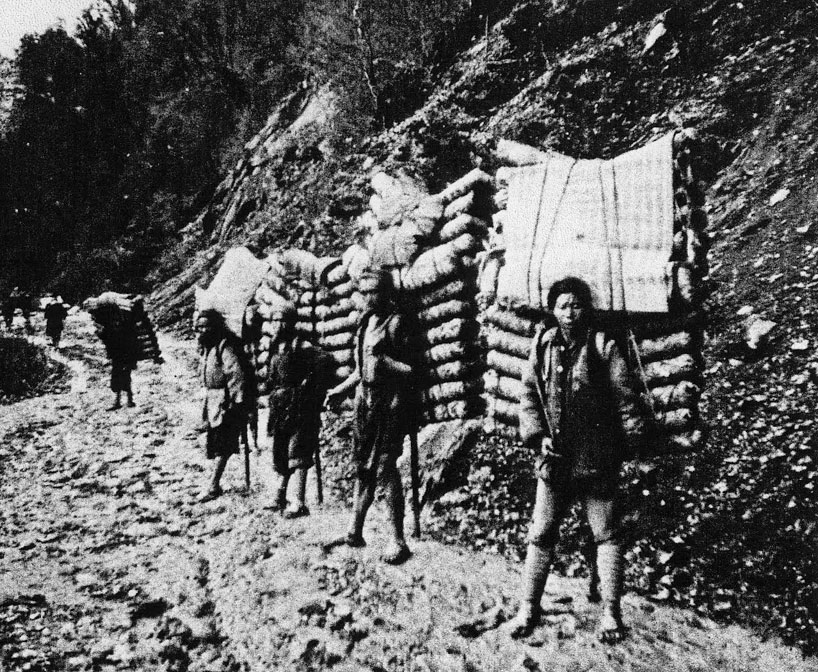
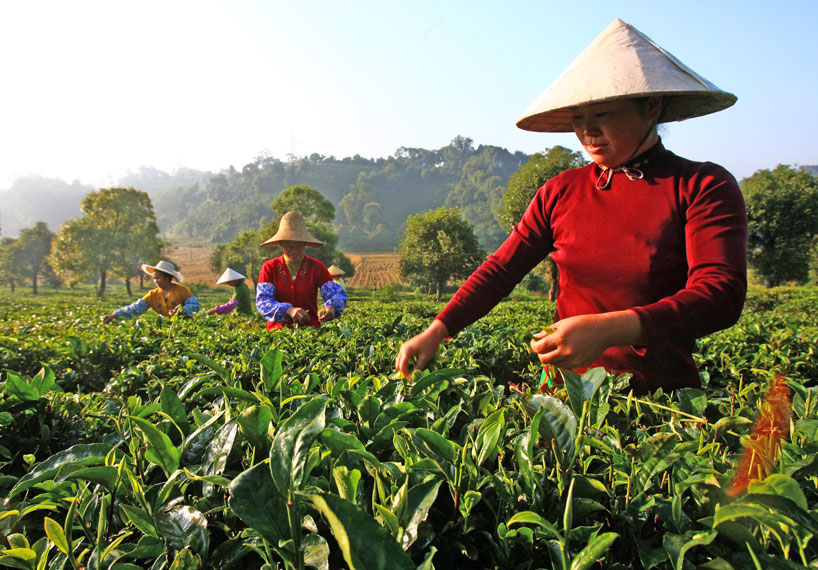
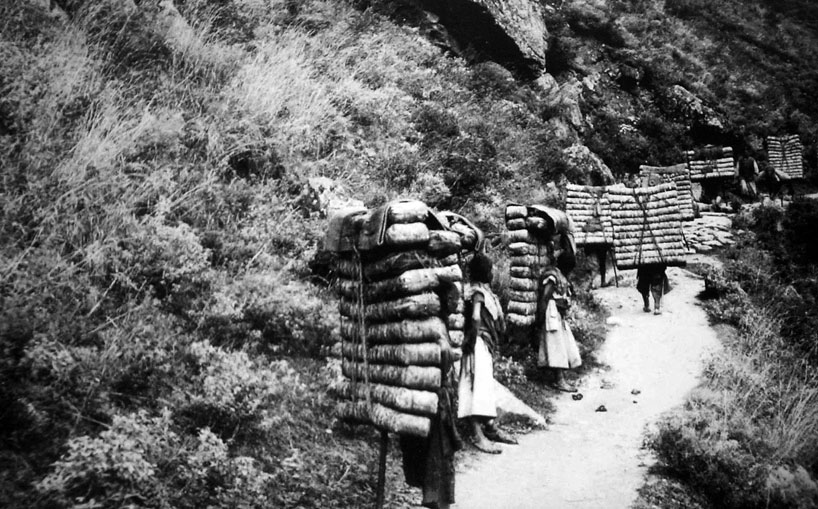
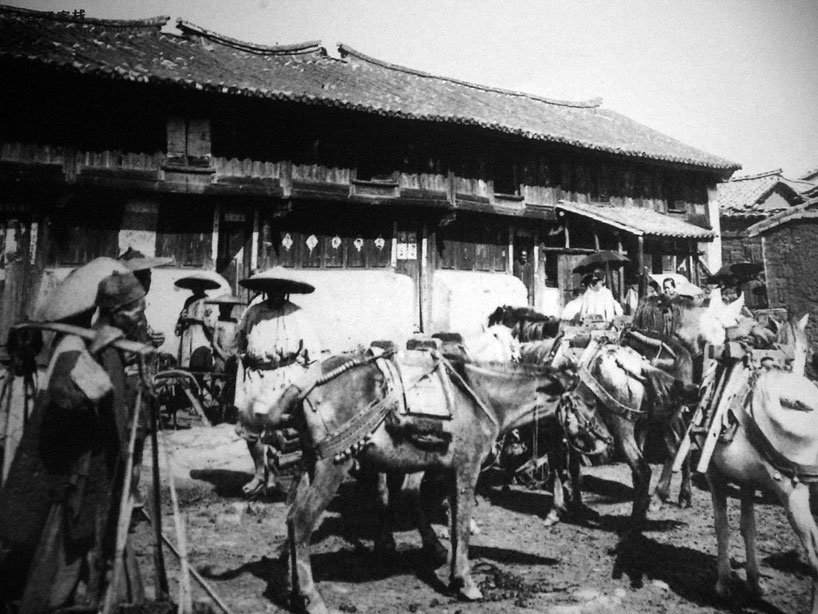
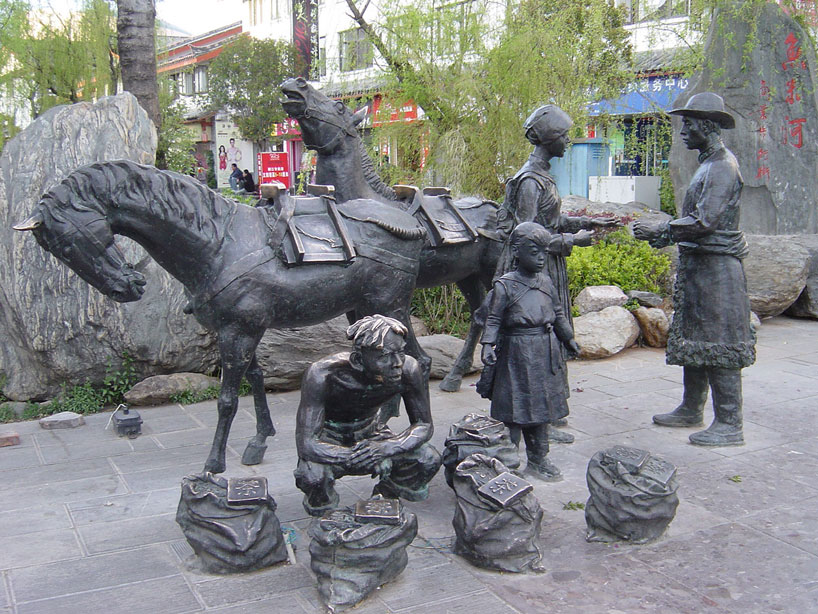

No hay comentarios:
Publicar un comentario